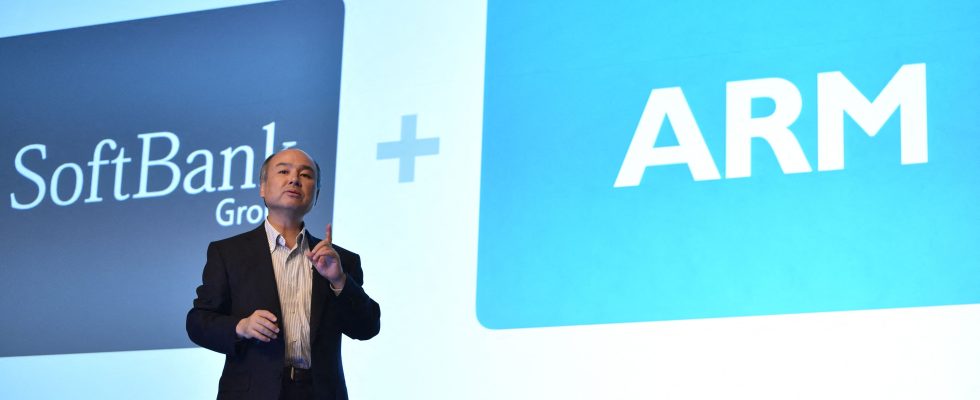The brand is not known to the general public, but its chip architectures are at the origin of the creation of 250 billion microprocessors present everywhere: in mobile phones, personal computers, servers, televisions, cameras, game consoles, cars… In 2023, Arm Holdings Limited provided its customers with the technology to manufacture 30 billion chips. And like the other players, it benefits from the insatiable demand for computing power resulting from the rise of artificial intelligence (AI). This call for air concerns all ranges of microprocessors: from the $40,000 Nvidia chip needed to drive AI models to specialized processors, embedded in mobile phones to deport AI functionalities on devices, and which is Arm’s favorite domain.
On August 21, the company announced its intention to enter the Nasdaq. Arm expects to exit the deal with a valuation of $60 billion to $70 billion. About 10% of this amount will be raised on the stock market, making it the biggest IPO of the year. Arm remains modest in size compared to players like Nvidia (valued at more than 1,000 billion dollars), Intel (140 billion), AMD (170 billion) or Qualcomm (123 billion). But since its creation in the 1990s, the British group has equipped a multitude of products, making its neutrality a strategic axis.
Today, Arm achieves 2.7 billion dollars in turnover, for 671 million in operating profit. Its financial performance and market share have aroused envy. Since 2016, the company has been owned by the Japanese group SoftBank. In 2020, after having already made a nice capital gain, SoftBank had sought to sell it for 40 billion to the Californian giant Nvidia which wanted to complete its range. But regulatory authorities in many countries have opposed it.
calamitous investments
Too bad for SoftBank, which would have had a great opportunity to recover after a series of disastrous choices in the management of its giant fund, Vision Fund. It was initially endowed with 100 billion dollars, a phenomenal sum when you consider that the largest venture capital fund in Silicon Valley (Andreessen Horowitz) manages 36 billion dollars. The most devastating move remains the investment in WeWork, the shared office rental company: $18 billion gone up in smoke, and what’s left of WeWork is set to file for bankruptcy in the coming weeks. Even more terrible is SoftBank’s failure to invest in Nvidia: in 2017, the Japanese fund took 5% of the chipmaker’s capital – potentially a stroke of genius. Except that SoftBank only kept its position for eighteen months. After the surge in Nvidia’s price following the AI frenzy, this share would be worth 56 billion today…
SoftBank is therefore playing big with the introduction to the Nasdaq of Arm. The uncertainties about the operation are detailed in length and breadth in its thick IPO prospectus. As in all stock exchange documents, the chapter “Risk Factors” is a plea for the security of the Livret A…
Beyond that, this IPO (Initial Public Offering) will send an important signal about Wall Street’s confidence in US tech. However, the clouds are numerous, between the rise in interest rates and the end of the free money that has driven tech for more than a decade, the much deeper than expected slowdown in China, the Sino-American political tensions, and also an overinvestment in artificial intelligence. Vigorous as the AI industry is, some worry about the unbridled funding of companies with no tangible product or revenue, bloated by huge flows of cash, and which will struggle to justify astronomical valuations – which could result in significant losses on portfolios.
Wall Street also seems to be preparing for bad weather. According to the firm S3 Partners which tracks stock market orders, the level of short selling in tech – expectations of a decline – is 14%, against 6.5% on average. The illustrious investor Michael Burry has announced that 94% of his generalist portfolio is now made up of short sales. It was he who predicted the subprime crisis of 2008.
* Frédéric Filloux is a senior reporter at L’Express
